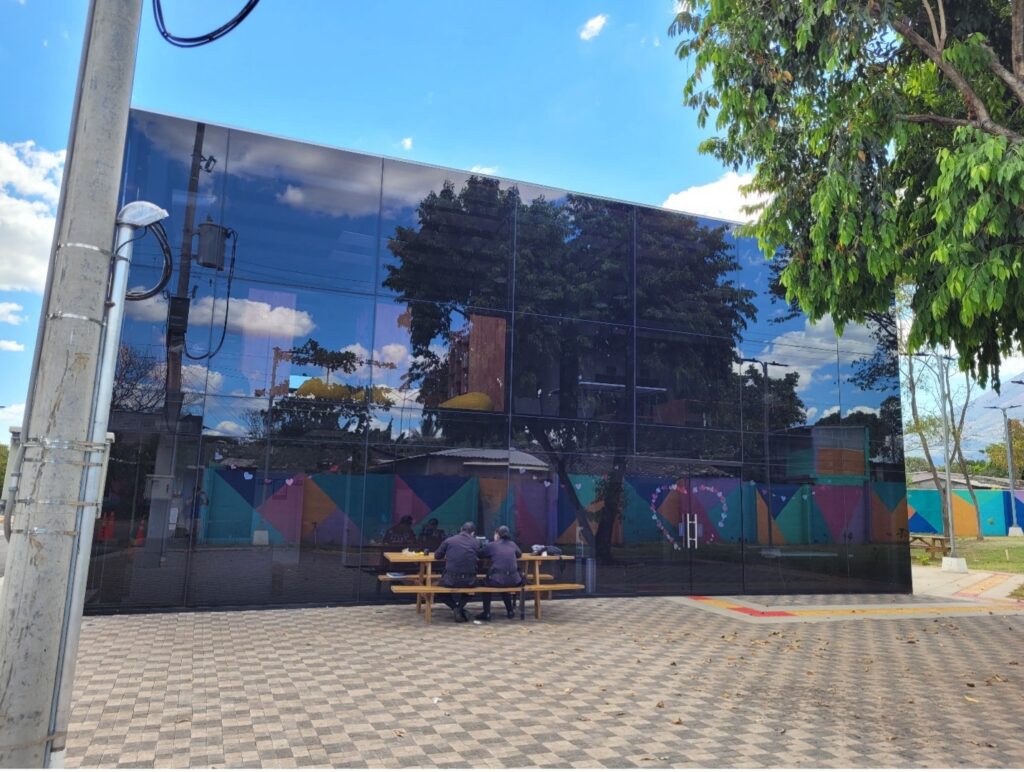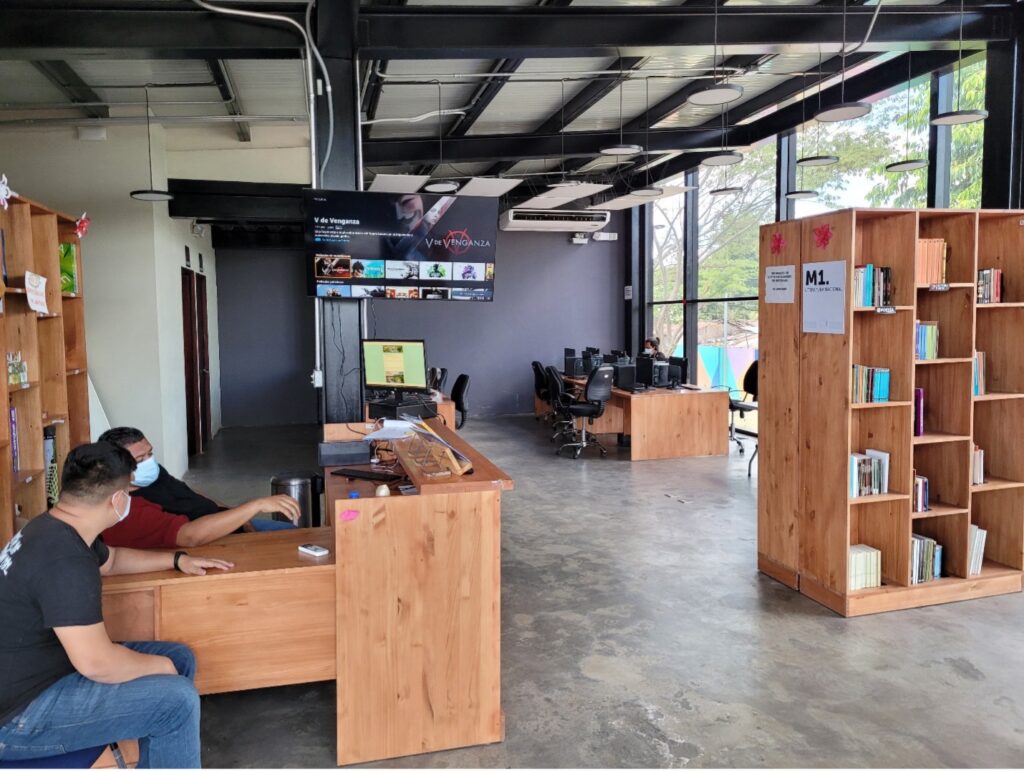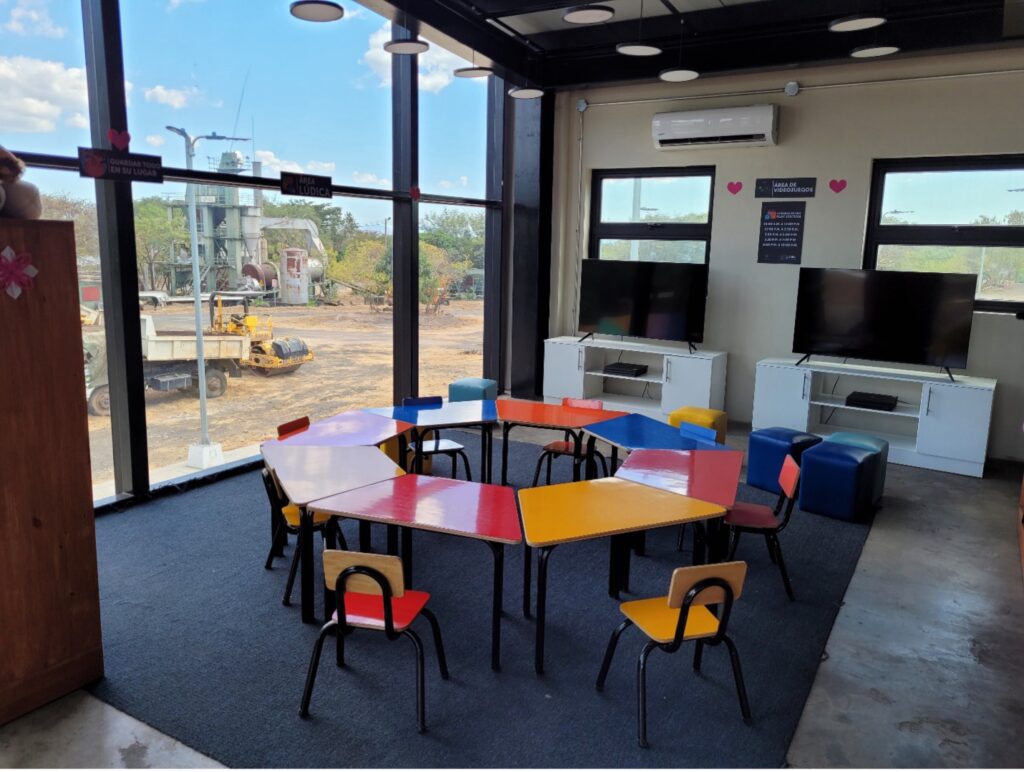Juan Antonio Sorto
Governments in Latin America and Mexico have used different types of design and placemaking models to address systemic social inequities impacting urban and rural communities. For example, in 2016, the Government of Medellin, Colombia created the Medellin Model program, which uses modern architecture to create sustainable buildings in low-income communities and improve public transportation (Díaz, 2019). In 2018, the Mexico City government found partners within the architecture field willing to advance their Points of Innovation, Freedom, Art, Education, and Knowledge (PILARES) program to address inner city youth development by constructing buildings that were welcoming to the targeted audience (Zatarain, 2022).
In 2021, El Salvador’s President Nayib Bukele inaugurated several urban community spaces known as Centros Urbanos de Bienestar y Oportunidades (CUBO), which translates to Urban Wellness and Opportunities Centers. Following the same concept as Medellin and Mexico City, CUBOs were placed in areas known to have an elevated level of inequality through the lack of economic opportunities and education combined with highs level of crime. For the CUBO in San Miguel, El Salvador located inside the neighborhood of Colonia Milagro de La Paz, the building was designed and built using modern architectural features, including solar panels and ecofriendly materials to sustain the building. The building functions as a library, computer lab, kitchen, and a space to learn and practice other trades, which are designed to bring the community together. Images show the design and usage of CUBO San Miguel, El Salvador. All images were taken on February 11, 2022.


2. Front of the Building

3. Water tower next to a ramp designed for people with disability to access the second floor

4. Two police officers using Wi-fi. There is a police station on site.

5. Doors to the entrance of the building are operated by solar energy.

6. Two patrons using the facility as a meeting place

7. A large teddy bear next to a sign that reads Area De Lectura (Reading Zone)

8. Two workers next to the book shelves and computer station

9. Kid play zone with two large screens and video game consoles.

10. Activity board highlighting past and future events inside CUBO
References
Díaz, L. S. (2019). INFRASTRUCTURAL PROJECTS IN MEDELLIN’S INFORMAL SETTLEMENTS, COLOMBIA: Medellín Model: Infrastructural projects in informal settlements. Retrieved from Critical Perspectives on International Planning: https://sites.utexas.edu/internationalplanning/case-studies/infrastructural-projects-in-informal-settlements-medellin/
Zatarain, A. K. (2022, June 23). The PILARES Program Seeks to Bring Beautiful Design to Mexico City’s Neglected Neighborhoods. Retrieved from ArchDialy: https://www.archdaily.com/984135/the-pilares-program-seeks-to-bring-beautiful-design-to-mexico-citys-neglected-neighborhoods
About the Author
Dr. Juan Antonio Sorto earned his PhD in Urban Planning and Environmental Policy from Texas Southern University. He is currently a Post Doctoral Research Fellow at the Bullard Center for Environmental Justice and Climate Change at Texas Southern University. His research interests are public participation, housing, environmental and climate justice, and policy. He is currently leading ethnographic research in El Salvador through the Bullard Center and Gerardo Barrios University in San Miguel, El Salvador to determine how public participation can lead to the creation of a capacity plan in an undeveloped nation that will allow the community to address environmental and climate issues.
